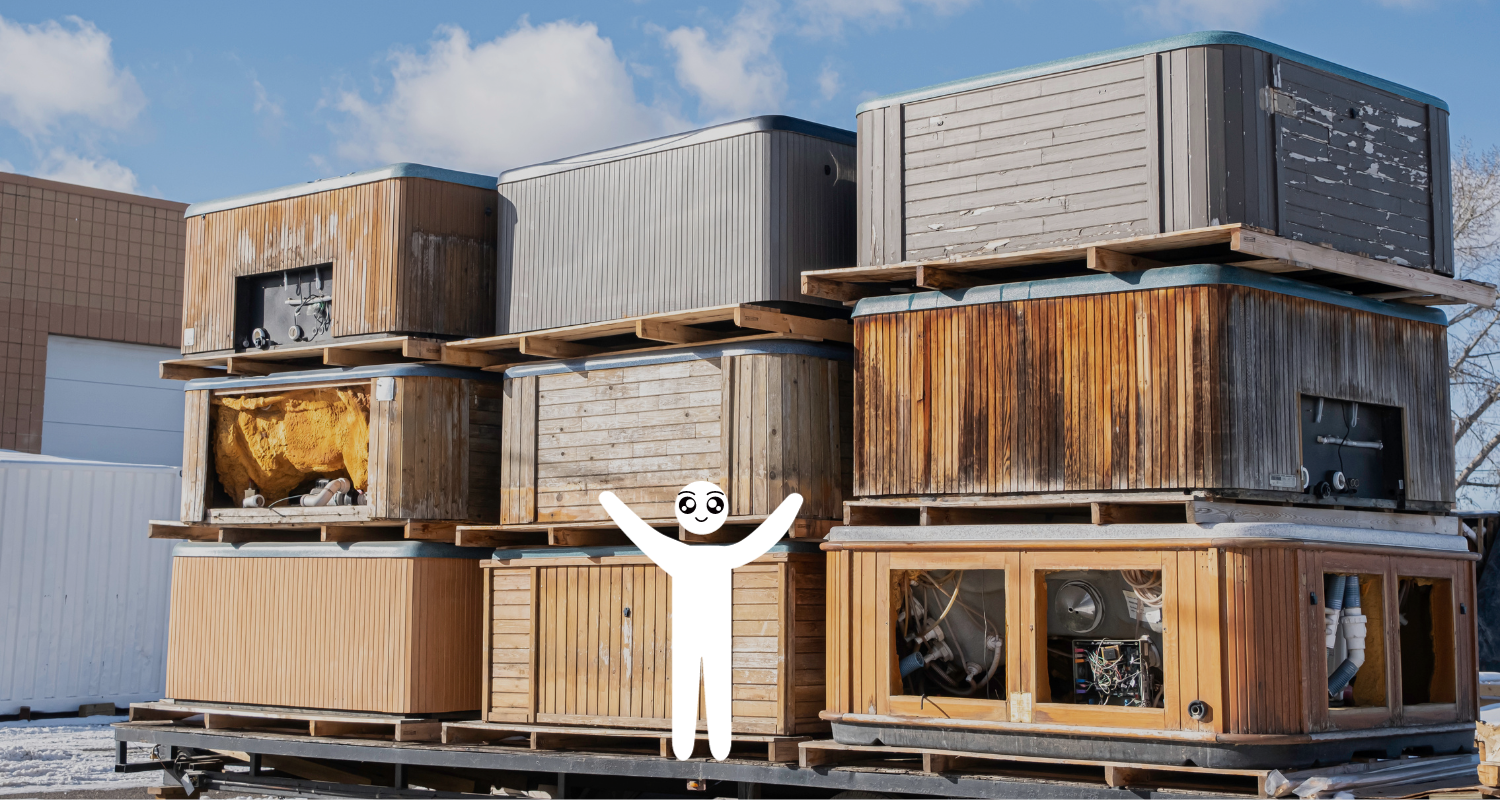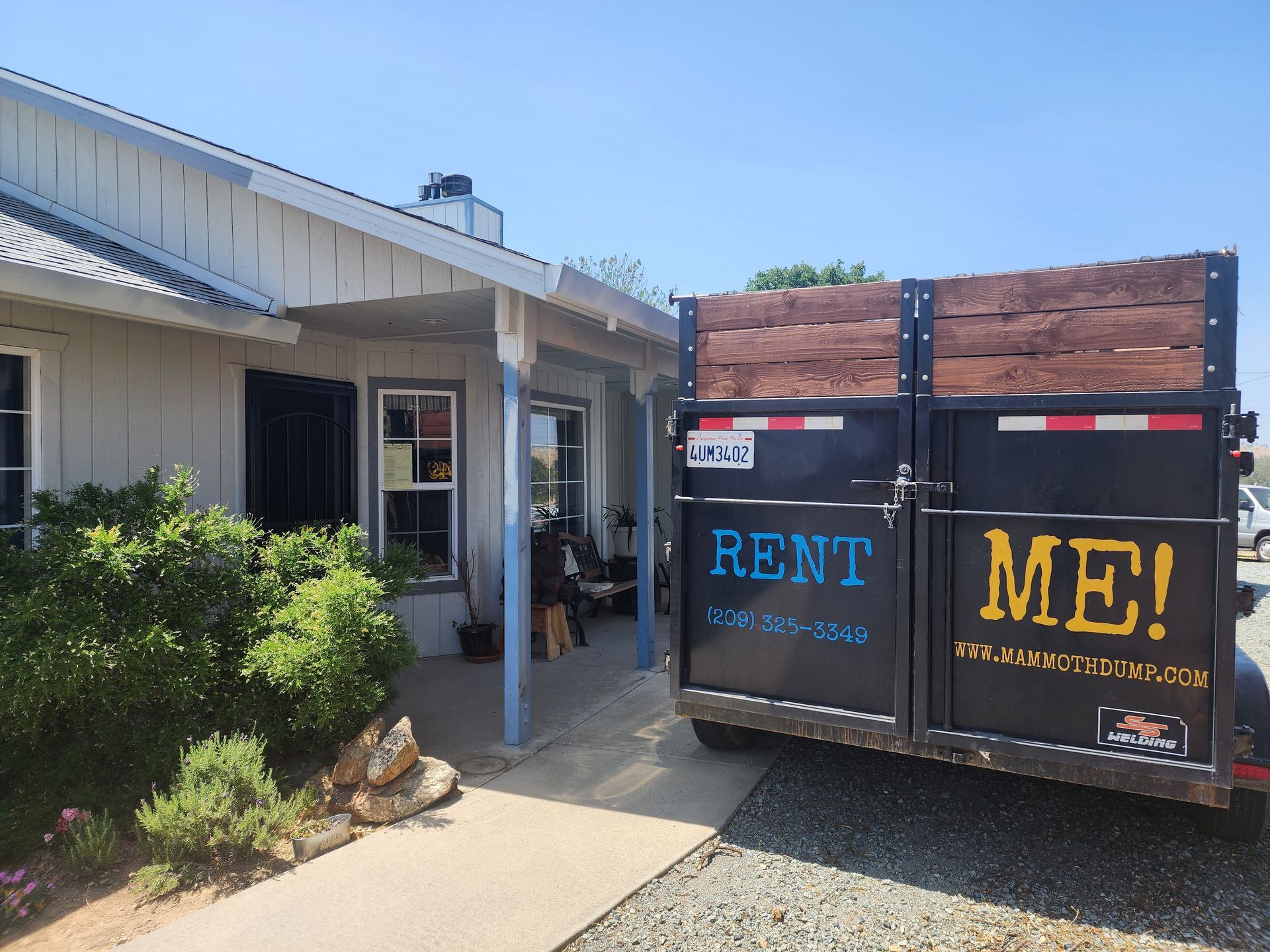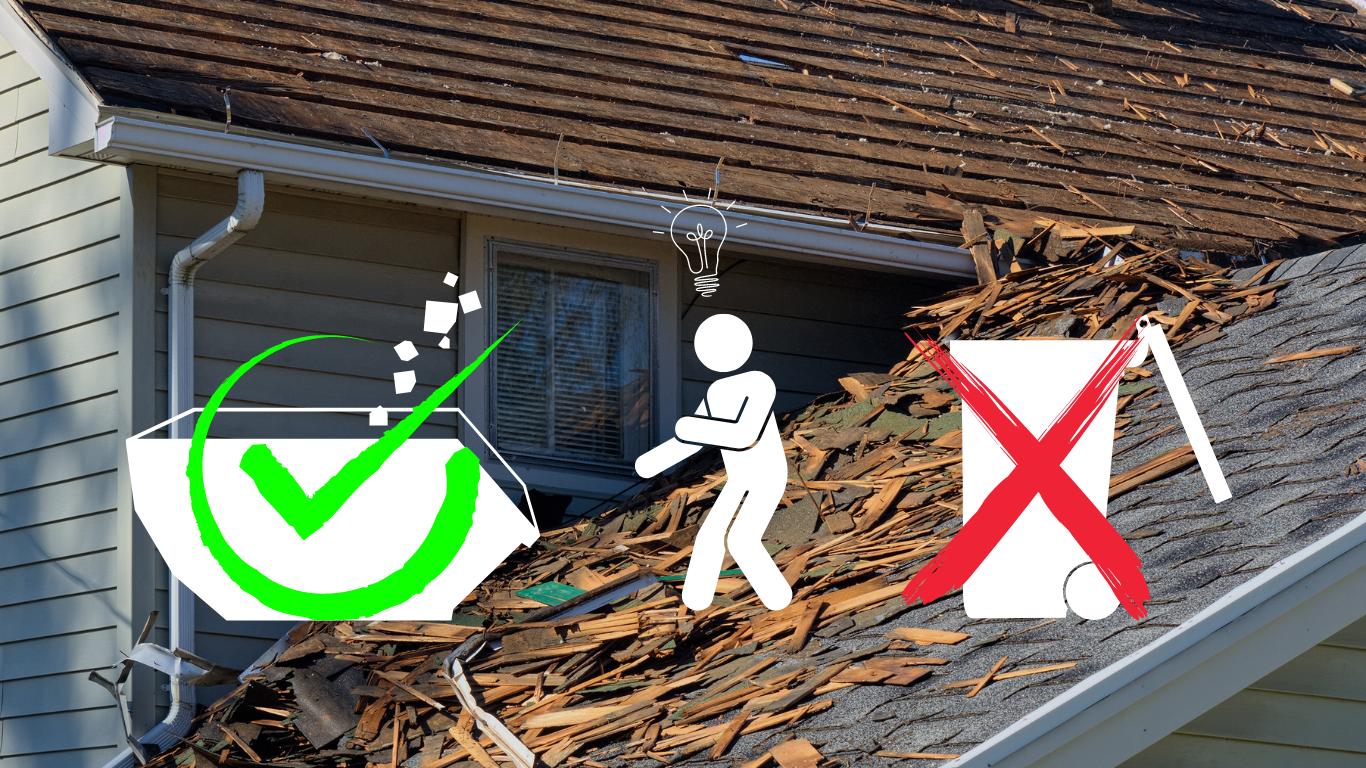Barn Demolition
Author: David Grissom
Original Published Date: 3/18/2024
Updated: 1/23/2025
Barn Demolition Cost Guide: How Much It Costs to Tear Down a Barn
Barn demolition can unlock valuable land for new construction, expansions, or simply clearing old, unsafe structures. But how much does a barn demolition cost? Understanding all the variables: labor, debris disposal, salvage options, and more—will help you plan your project wisely and avoid unexpected fees.
This guide covers the average cost range, real-life barn demolition examples, factors that affect pricing, and tips for selecting the right contractor. You’ll also learn about DIY vs. professional demolition, deconstruction best practices, and how to reuse or sell old barn wood to offset costs.
Key Takeaway
- Barn Demolition Cost Range: Typically $1,500–$10,000, but can reach $25,000+ for large or complex projects.
- Key Cost Factors: Barn size, materials, location, accessibility, debris disposal, and whether you choose demolition or deconstruction.
- DIY vs. Professional: DIY saves on contractor fees but increases safety risks, time, and potential hidden expenses. Pros handle permits, hazardous materials, and disposal efficiently.
- Salvageable Materials: Old barn wood (especially old-growth timbers) has high resale value; consider deconstruction if you want to reclaim/sell it.
- Finding a Contractor: Gather multiple quotes, confirm experience with barn teardowns, and check references or reviews to ensure you get quality service at a fair price.
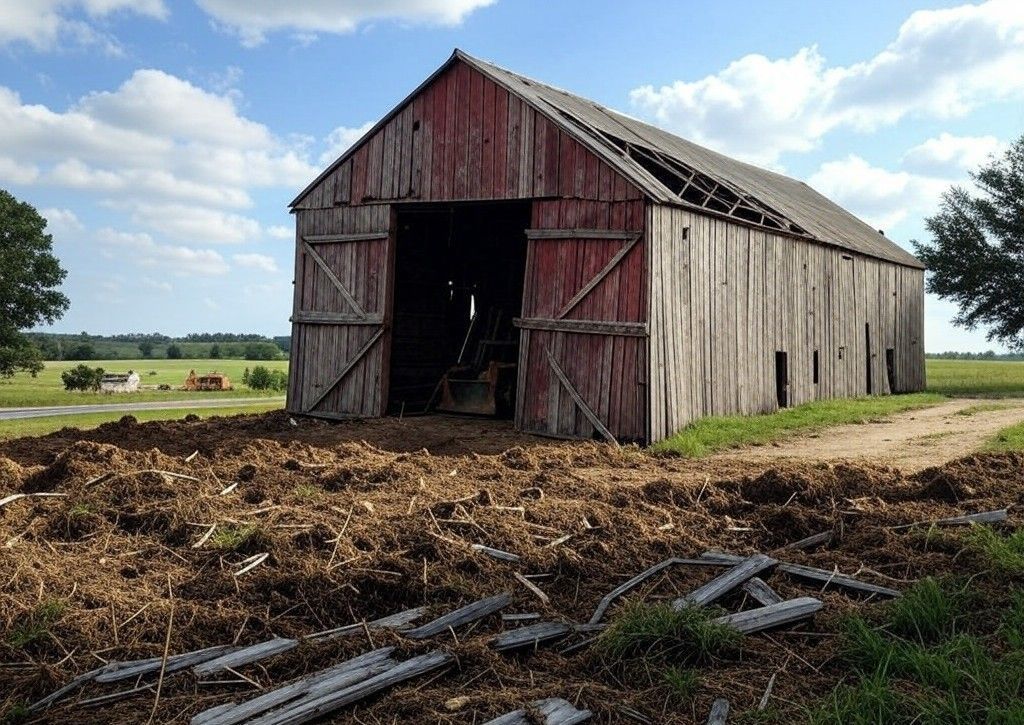
Barn Demolition Average Cost
On average, barn demolition costs fall between $1,500 and $10,000, including labor and debris disposal. In some cases—like very large barns, complex salvage operations, or barns with hazardous materials—costs can rise to $25,000 or more.
Deconstruction (taking the barn apart by hand to salvage materials) can cost significantly more than standard demolition, but the sale or reuse of high-quality timbers and metal often helps recoup part of that expense.
Barn Demolition Cost Examples
To illustrate the real-life costs of barn removal, below are examples of recent barn demolition projects. Keep in mind, these figures vary by region, barn size, materials, and the method used (mechanical demolition vs. hand deconstruction).
| State | Barn Size | Cost | Notes |
|---|---|---|---|
| Los Angeles, CA | 1,200 sq ft wooden barn | $7,000 – $10,000 | Higher disposal fees and stricter environmental regulations |
| Chicago, IL | 2,000 sq ft pole barn | $8,500 – $12,000 | Urban labor rates raise overall cost |
| Houston, TX | 3,000 sq ft steel/wood hybrid | $9,000 – $15,000 | Larger structure; city fees remain moderate |
| Phoenix, AZ | 900 sq ft timber barn | $4,000 – $6,000 | Smaller size; dry climate often helps reduce rot |
| New York City, NY | 1,600 sq ft wood barn | $9,000 – $14,000 | High labor costs + potential historical property constraints |
| Atlanta, GA | 2,400 sq ft wooden barn w/ silo | $10,000 – $16,000 | Added complexity of silo removal |
| Denver, CO | 1,500 sq ft stone foundation barn | $7,500 – $11,000 | Demolition of stone base adds labor/time |
Factors Affecting Barn Demolition Pricing
The cost of barn demolition per square foot generally ranges from $5-$10, but many variables come into play.
1. Barn Size and Complexity
Larger barns naturally require more labor and equipment, driving up the price.
2. Barn Location and Accessibility
A remote site with difficult access or where heavy machinery can’t maneuver easily may increase labor and transportation costs.
3. Construction Materials
Barns built with wood vs. those with concrete floors, metal siding, or hazardous materials (like asbestos/lead paint) can change both demolition methods and costs.
4. Foundation Removal
Removing and disposing of a concrete foundation adds time, labor, and dumping fees.
5. Hazardous Materials
Special permits, remediation techniques, and licensed abatement professionals may be required for asbestos or lead paint removal, raising the final bill.
6. Demolition vs. Deconstruction
Deconstruction requires more manual labor to carefully remove and preserve usable wood. This can double or even triple the labor costs but can offset some expenses if you sell or reuse the salvaged timbers.
7. Contractor Rates
Local market conditions and each contractor’s overhead also affect how much you’ll pay. Comparing multiple quotes is crucial.
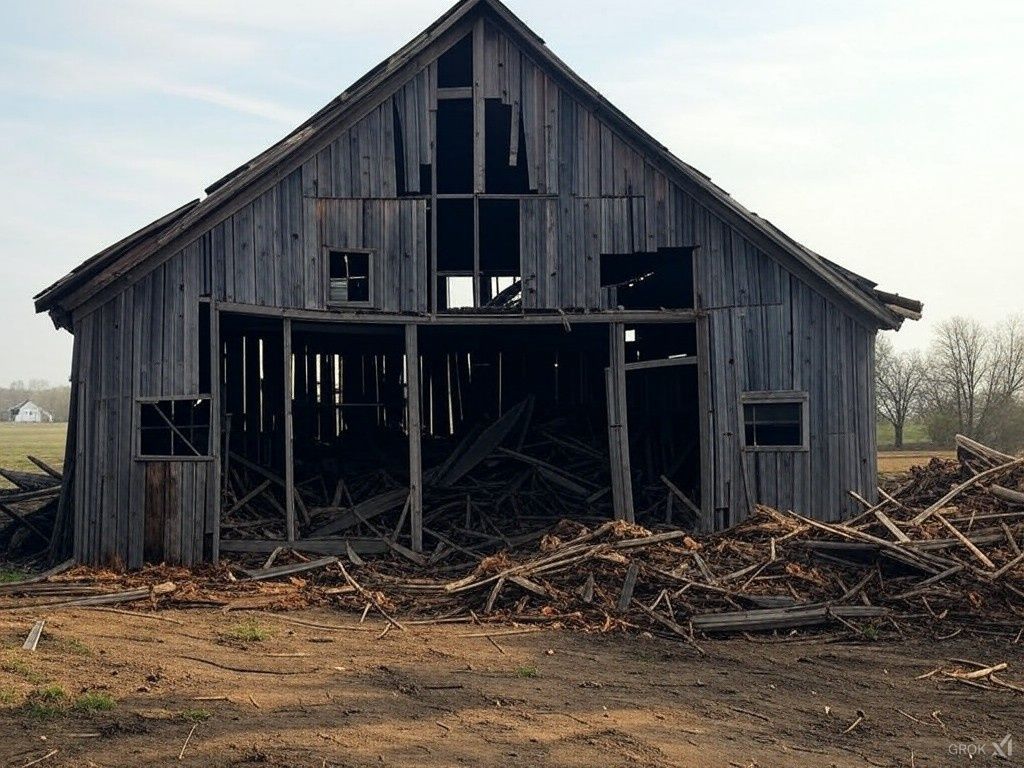
“Is your barn standing on its last wooden leg? It’s time to assess!”
Recognizing the Signs: Assessing the Barn’s Condition
Before you decide whether to demolish or salvage a barn, assess its structural health:
- Leaning Walls or Sagging Rooflines
- Rotted Wood or Termite Damage
- Weak Foundation / Cracked Concrete
- Mold, Mildew, or Persistent Moisture Issues
- Excessive Creaking or Warping
A thorough assessment can help you decide if partial repairs, full restoration, or complete demolition is the most cost-effective route.
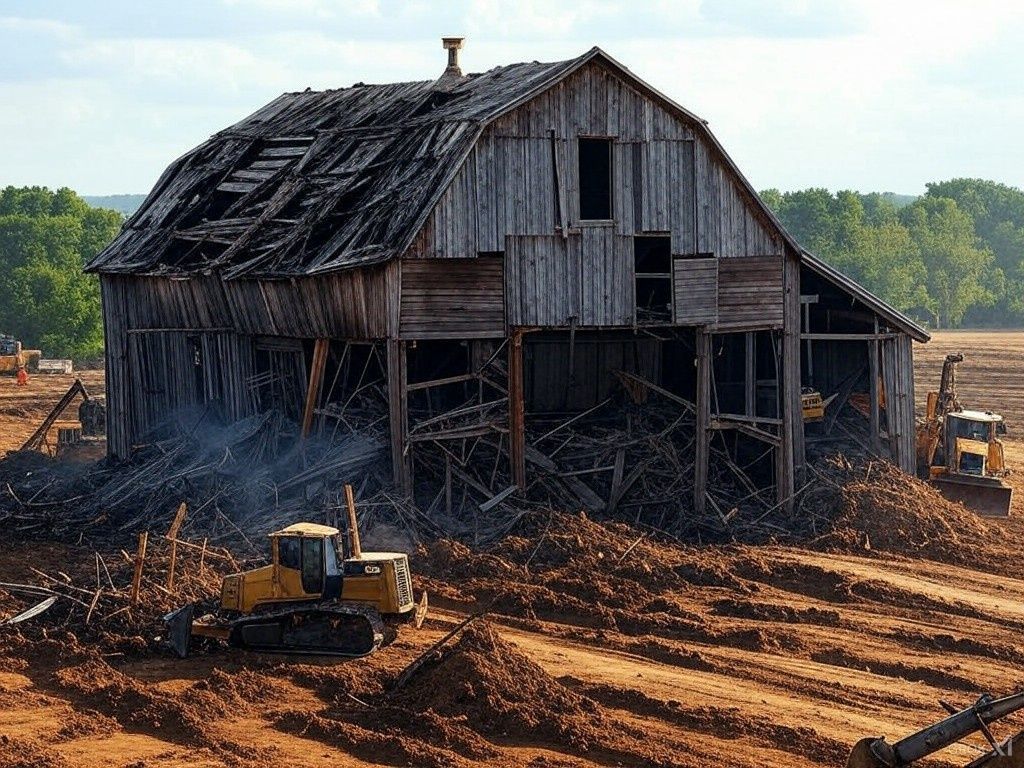
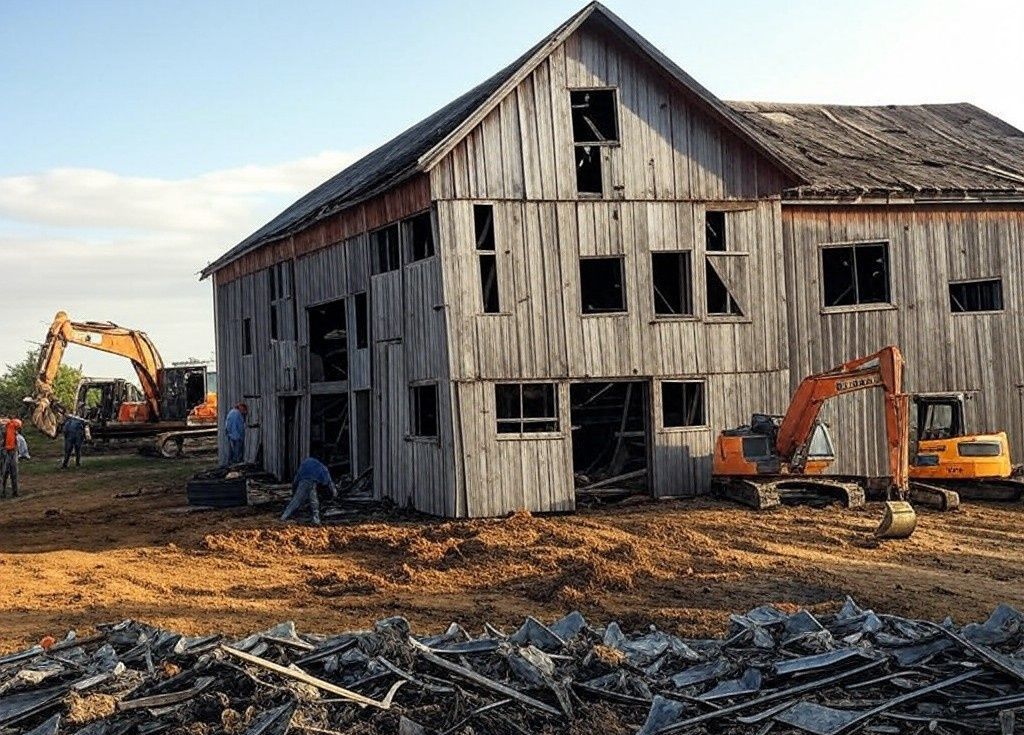
Tools and Equipment for a Successful Demolition
Hand & Power Tools
- Reciprocating Saws / Sawzalls: Versatile for cutting through wood, nails, and even thin metal.
- Crowbars & Pry Bars: Essential for carefully prying boards or salvaging timbers.
- Chainsaws: Useful for quickly slicing large wooden beams or support posts.
- Sledgehammers: Great for knocking out walls and weaker sections of the structure.
- Power Drills & Screw Guns: If you’re deconstructing to salvage parts, you’ll want these on-hand.
Heavy Machinery
- Excavators: Speed up large-scale demolition by pushing or pulling down sections.
- Skid Steers / Loaders: Ideal for hauling debris to dumpsters.
- Backhoes: Can help break foundations or remove slabs of concrete.
- Dump Trucks: For sites with significant debris requiring off-site disposal.
The equipment you choose depends on budget, barn size, and whether you plan to save materials. Often, a mix of manual tools (for controlled deconstruction) and heavy machinery (for final teardown) yields the best result.
Breaking Down the Barn Demolition Process
Permitting & Inspection:
Some cities require a demolition permit or an environmental inspection. Don’t skip this step; fines for unauthorized demolition can be steep.
Safety Setup:
Erect barriers or caution tape to keep bystanders out of harm’s way.
Make sure you have proper protective gear—hard hats, goggles, gloves, boots.
Asbestos / Lead Paint Testing (If Suspected):
Old barns can hide these hazards. Hire a certified abatement company if tests confirm their presence.
Initial Deconstruction (Optional):
Remove doors, windows, and any easily salvaged boards or beams first if you plan to recoup costs by selling reclaimed wood.
Main Demolition:
Use heavy equipment or strategic manual demolition to collapse larger sections safely.
Debris Sorting & Disposal:
Separate recyclable metal or wood from general debris if you’d like to reduce landfill waste or sell scrap.
Load the rest into dumpsters for removal.
Site Cleanup & Ground Prep:
Fill holes, remove old foundations, and level the area for future use.
DIY vs. Professional Barn Demolition Cost
DIY Demolition
Pros:
- Lower labor costs since you’re doing most of the work.
- Hands-on control for salvageable lumber or historical elements.
- Flexible timeline; work at your own pace.
Cons:
- Requires renting heavy equipment and dumpsters (adds up quickly).
- Potential for serious injury if the barn is unstable or you lack demolition experience.
- Lengthier project timeline if you’re working with a small crew.
Hiring a Professional
Pros:
- Licensed contractors typically offer faster, more efficient demolition.
- They manage permits, hazardous material handling, and site cleanup.
- Insurance coverage protects you if accidents happen on-site.
Cons:
- Higher upfront costs.
- You may need to coordinate salvage requests before the demolition begins.
- Less DIY gratification if you enjoy hands-on projects.
In many cases, partial DIY is an option: hire professionals for tricky steps (like hazardous materials or structural tear-down) and handle simpler tasks, like removing salvageable elements, on your own.
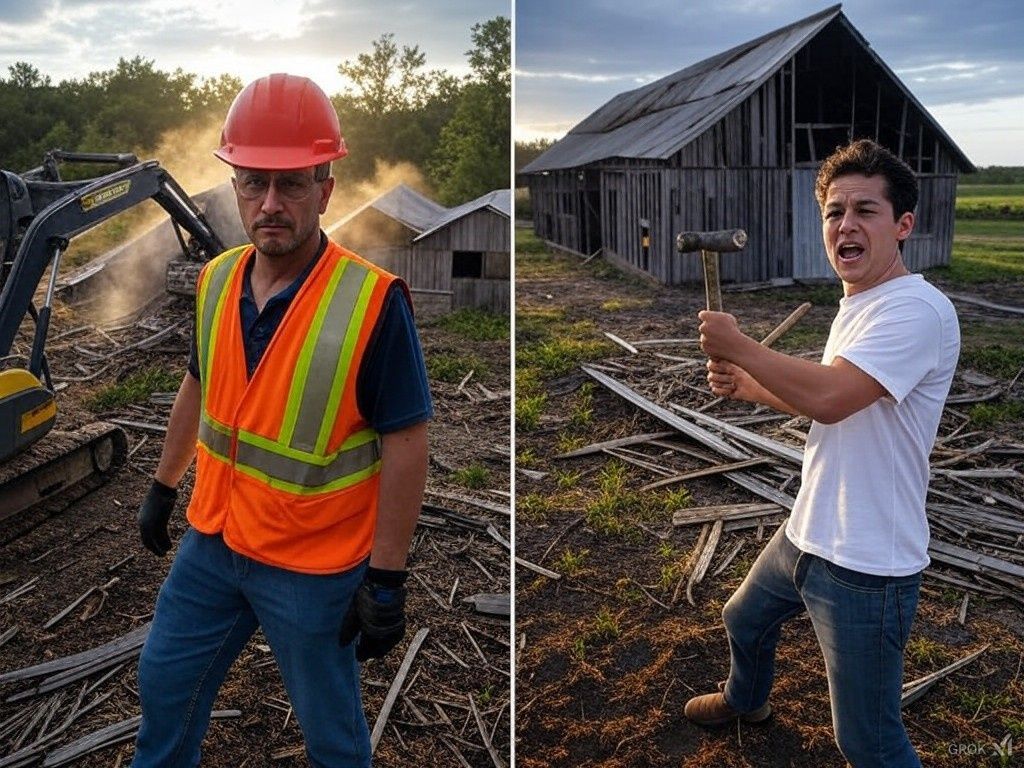
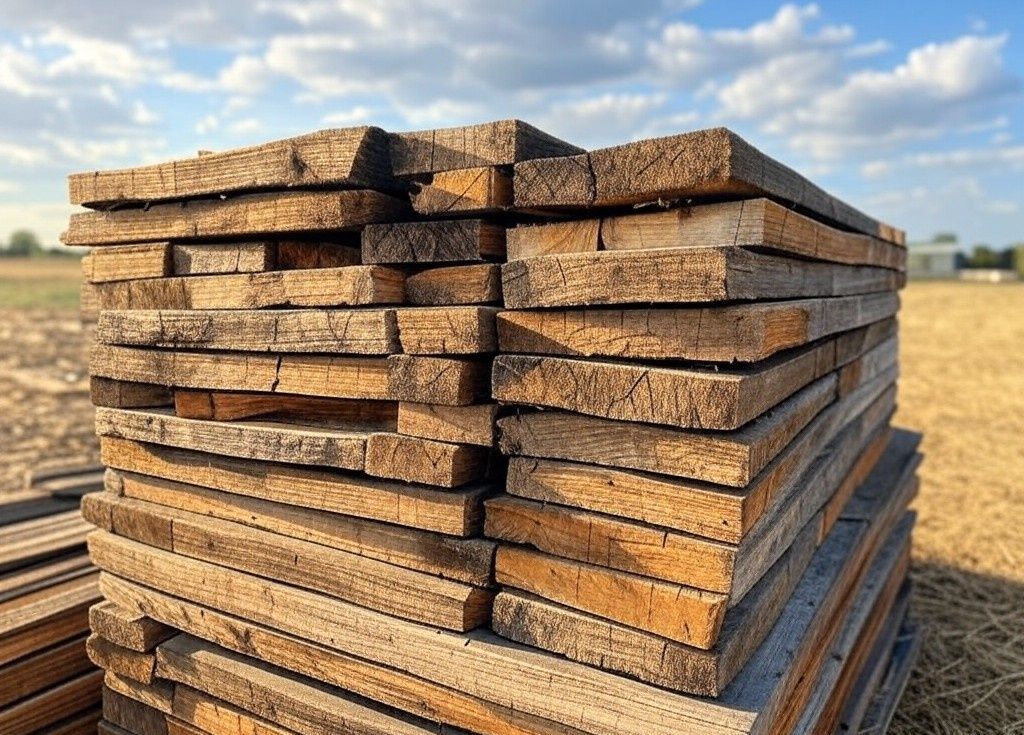
Salvage Value: Offsetting Your Barn Demolition Cost
- Barn Wood: Old-growth timbers are prized by furniture makers, interior designers, and DIY enthusiasts.
- Metal Roofing & Hardware: Corrugated steel sheets, hinges, and door handles may have resale value.
- Beams & Columns: Solid oak or chestnut beams can fetch a premium if in good shape.
Deconstruction (disassembling the barn carefully) is more labor-intensive than a quick tear-down, so it’ll drive up labor costs. However, selling reclaimed materials can offset some or all of that additional expense. Before you commit to a salvage plan, confirm that the wood is free from rot or pest infestation.
After Demolition: Preparing Your Land for the Next Chapter
Once your barn is down and debris is cleared, think about long-term use of that newly freed space:
- New Construction: Erect a modern, more efficient barn or a garage/workshop.
- Agricultural Projects: Create a pasture, greenhouse, or orchard.
- Residential or Commercial Building: Add a guest house, small business, or event venue—pending zoning rules.
- Recreational Space: Convert the cleared area into a garden, patio, or outdoor entertainment zone.
Regardless of the plan, budget for grading or foundation removal if your old barn had concrete or stone footings.
Final Thoughts on Barn Demolition Cost
Barn demolition is a multi-step process, and cost is often the deciding factor for property owners. By understanding the average price range, influencing factors, and possible salvage opportunities, you can tackle the project without financial surprises.
- Gather Multiple Quotes: Compare at least three contractors or services to ensure you’re getting competitive rates.
- Identify Hazards Early: If there’s any chance of asbestos or lead paint, handle it properly from the start.
- Factor in Salvage: If you have valuable old-growth timbers, deconstruction could help recoup expenses.
- Plan for Disposal: Dumpster fees and landfills can be more expensive in big cities, so research local regulations and costs.
With solid planning, a clear budget, and the right help—be it professional demolition services or a well-organized DIY approach—you can remove your old barn safely and set the stage for a brand-new property vision.
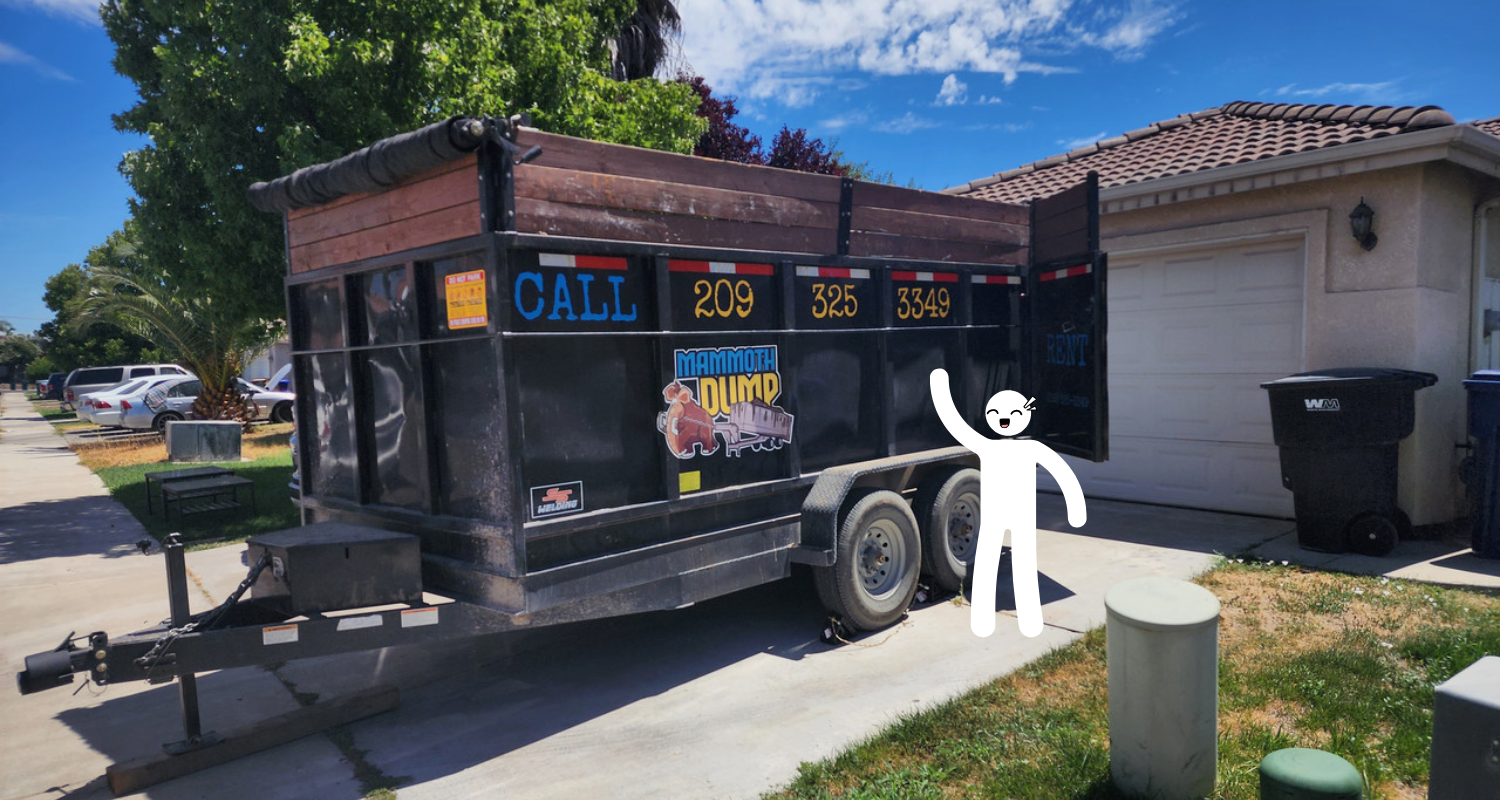
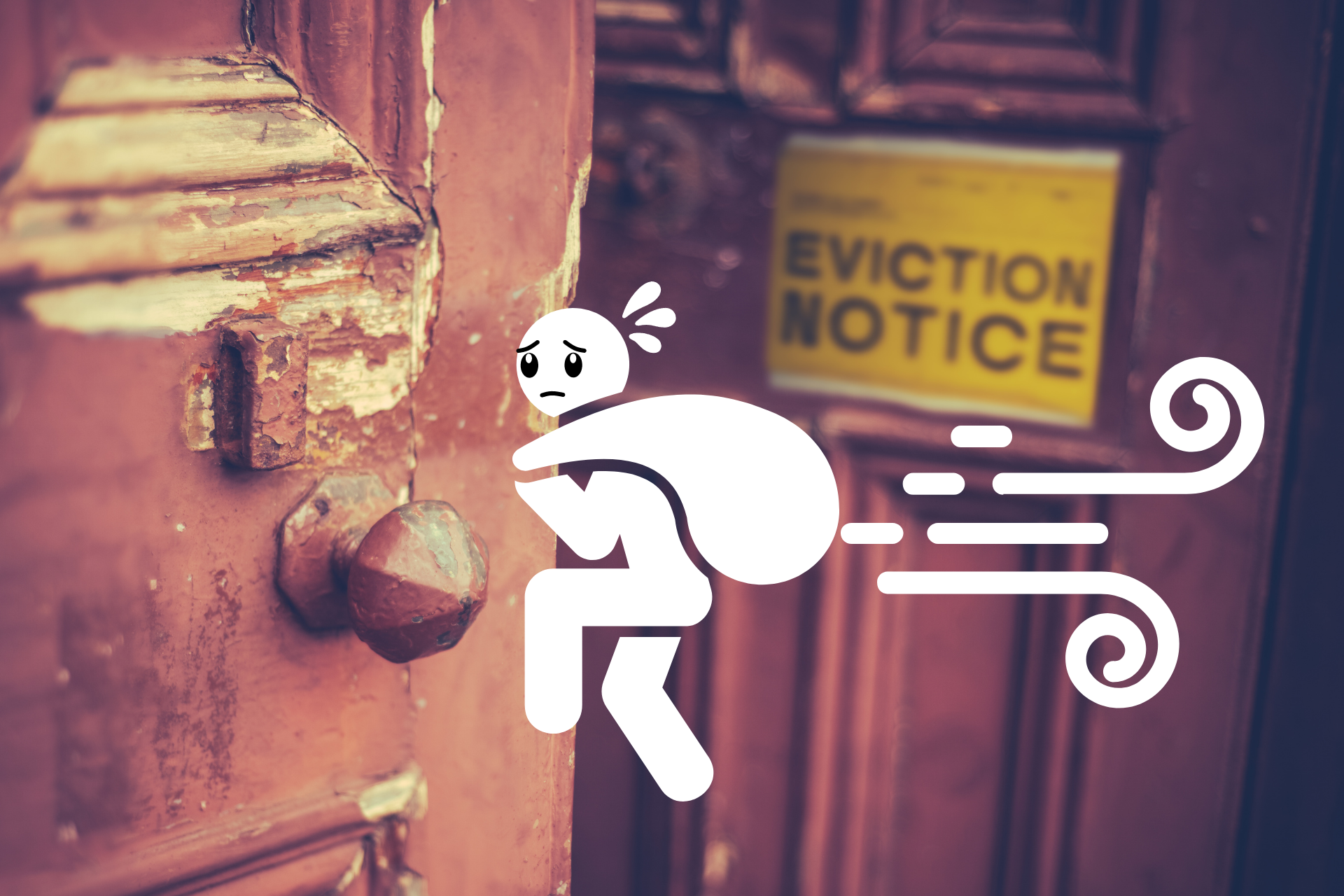
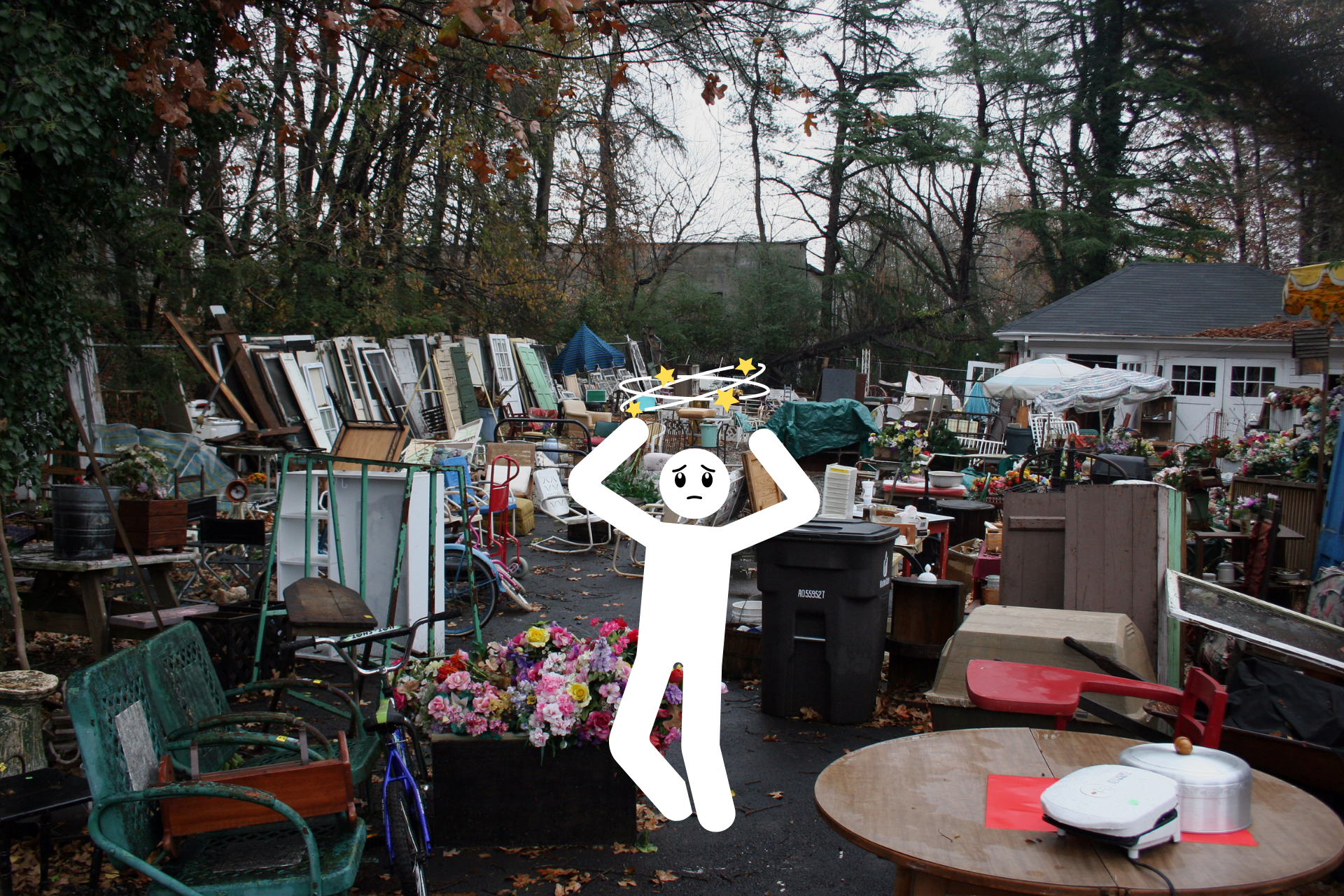
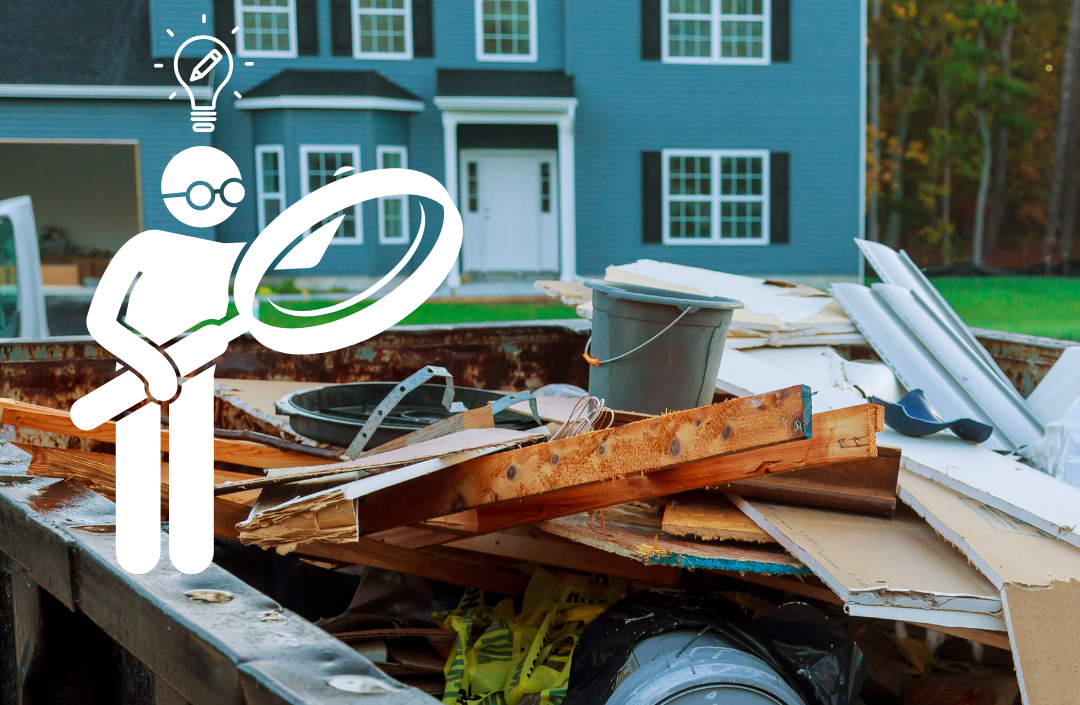
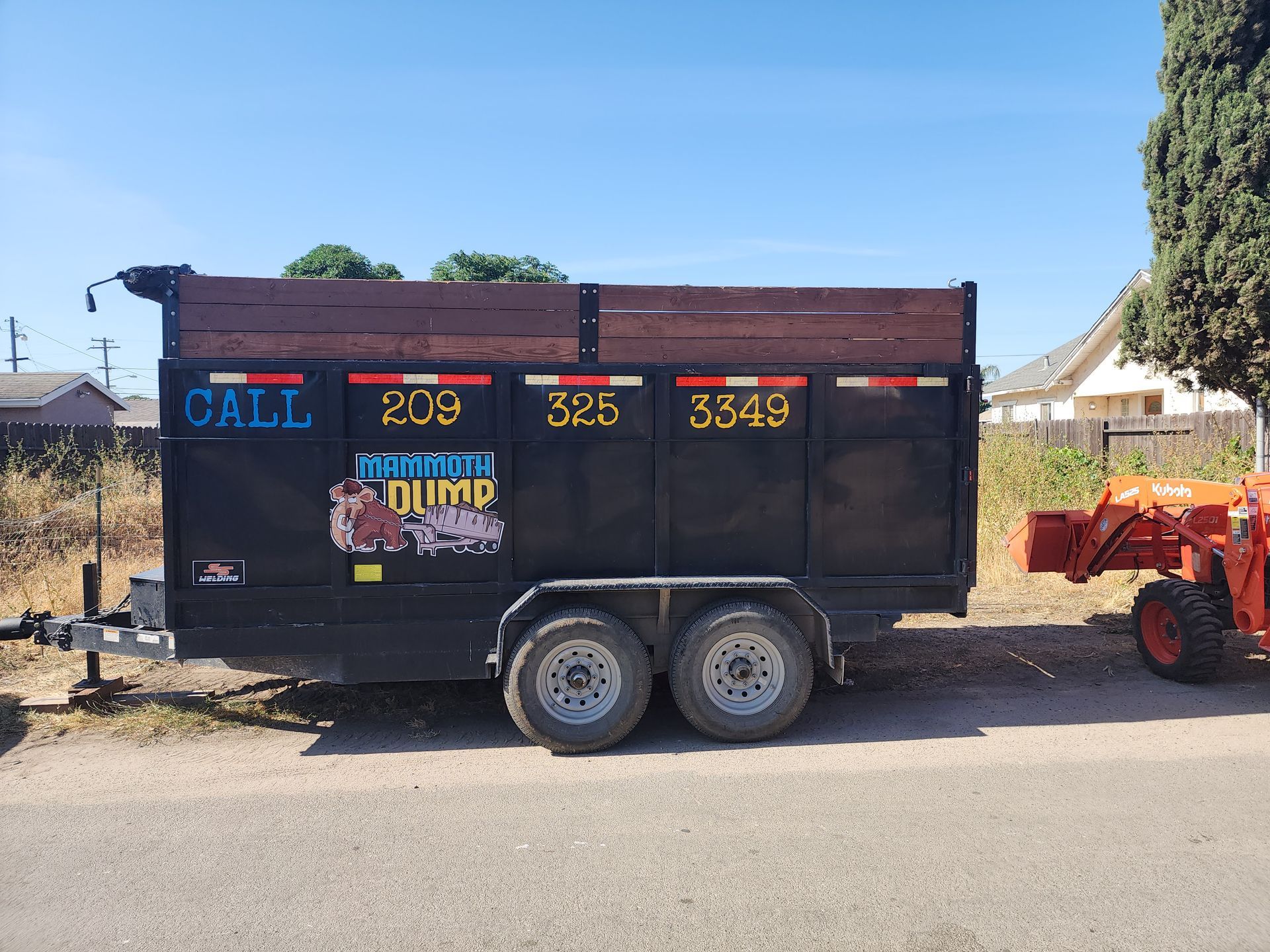
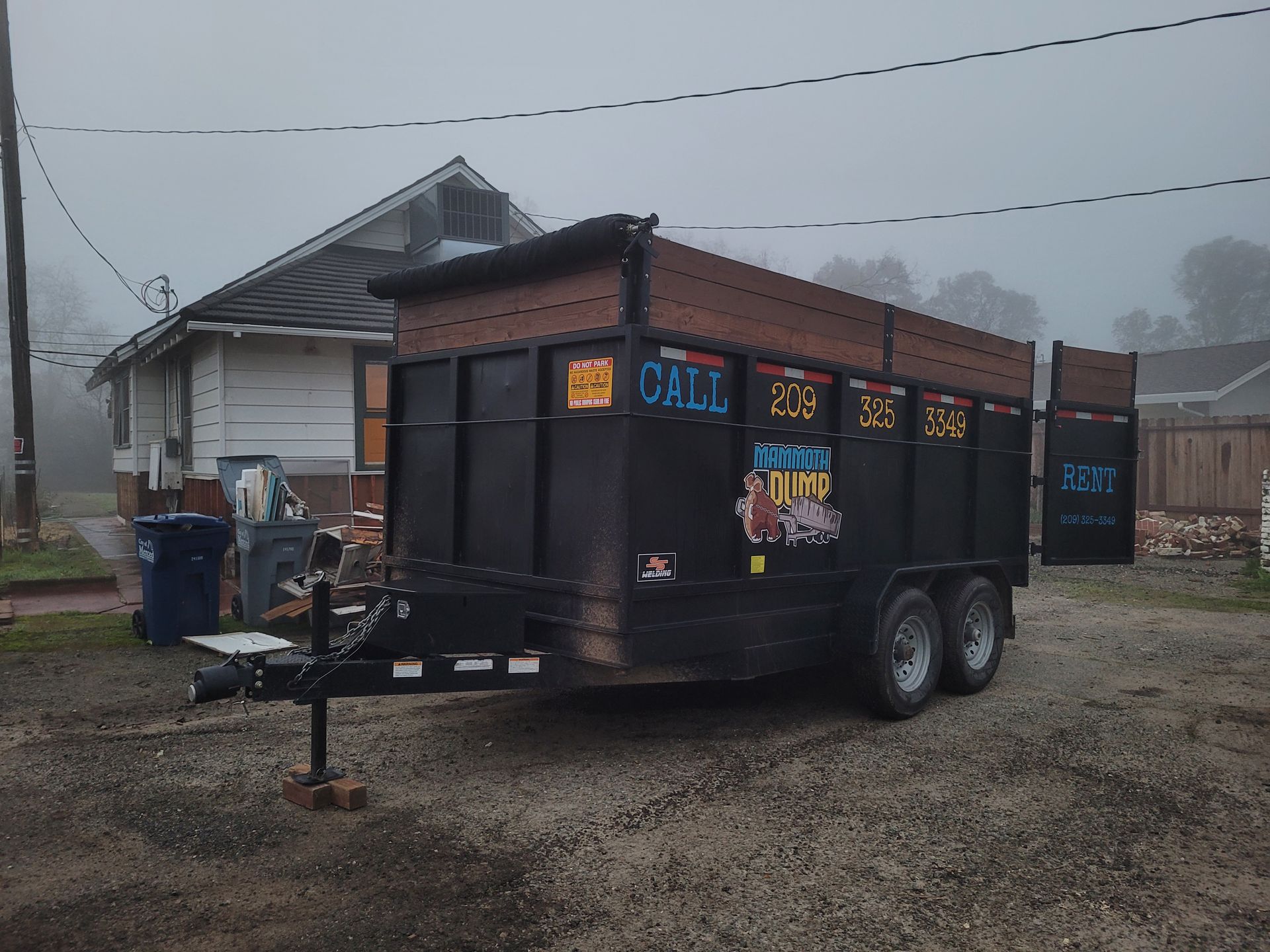
Rent A Dumpster
OR
Ready to tackle that cleanup with a dumpster rental? Dial 209-325-3349 now to chat with our Mammoth Dump experts about renting a roll-off container. We proudly serve Merced County, Stanislaus County, Fresno County, and surrounding areas. Get your waste management solutions from the experts today!
Same or Next Day Dumpster Rental
Contact Us
Please fill in the form below and submit to schedule same or next day dumpster service
in Merced county or surrounding cities.



